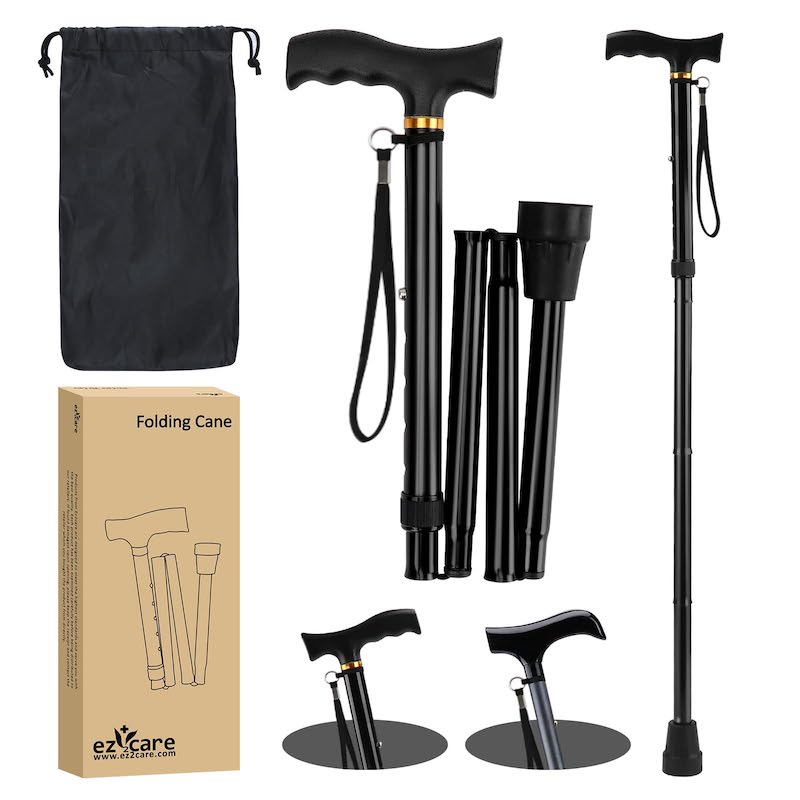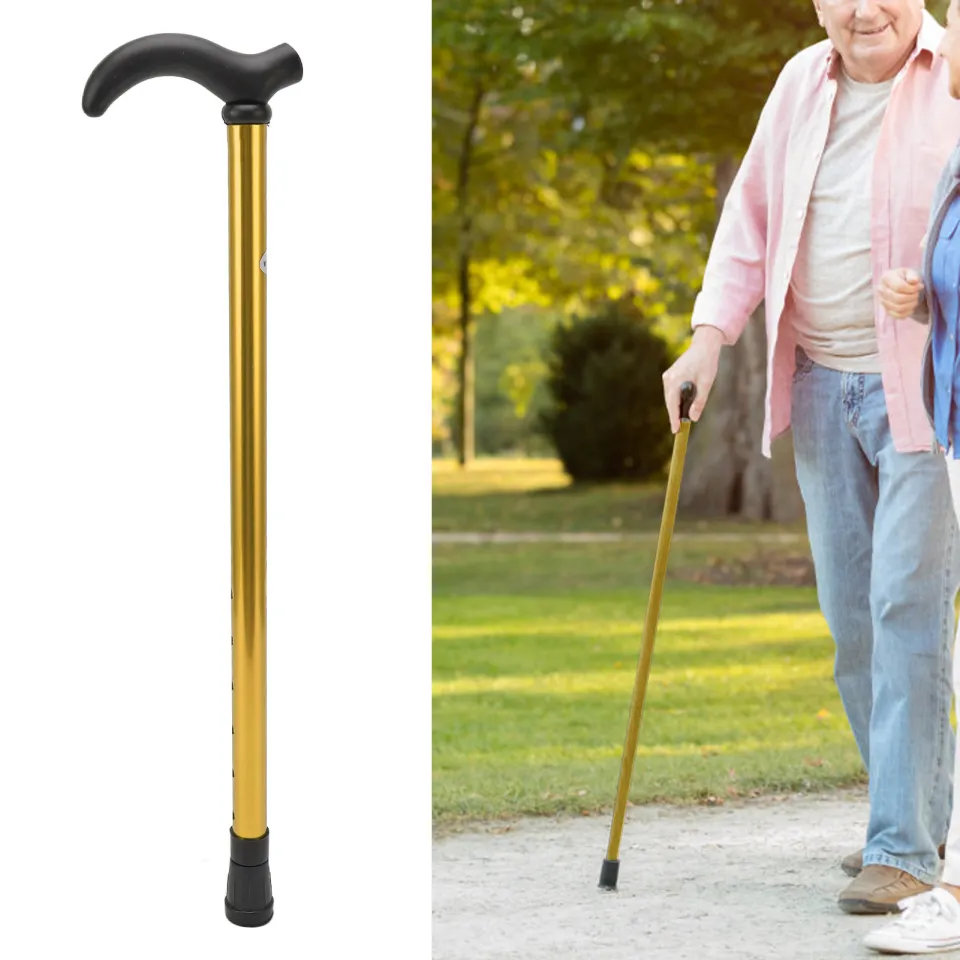Understanding Walking Sticks
Purpose and Usage of Walking Sticks
What is the difference between walking stick vs cane? Walking sticks serve as temporary support for balance and stability, mainly during outdoor activities. Unlike canes, they’re not designed for long-term use or to bear significant weight. Walking sticks can assist with maintaining footing on uneven terrain, making them ideal for hikes or nature walks.
Design and Features of Walking Sticks
Typically, walking sticks have a simple, straight design. They’re crafted from materials like wood or metal and may feature decorative elements. Many walking sticks are adjustable in height and some have foldable designs for easy transport. Their handles tend to be less ergonomic than canes, focusing more on aesthetics.
When to Choose a Walking Stick
Opt for a walking stick when engaging in temporary, outdoor activities that require additional stability. They’re suited for those who need a little extra support on rugged trails or for someone looking to enhance an outfit rather than provide substantial mobility assistance.
Exploring Walking Canes
Walking canes are vital for individuals needing consistent support. These devices focus on functionality and can bear weight over long periods, aiding those with chronic conditions.
The Role of Walking Canes in Mobility
Walking canes improve mobility for those with impairments. They ensure users have continuous support, reducing stress on joints and enhancing balance.
Types of Walking Canes and Their Handles
Various cane types cater to different needs. They range from basic single-point canes for minor support to quadripod canes for maximum stability. Handles are crafted for comfort, some boasting ergonomic designs for prolonged use.
Long-Term Benefits of Using Walking Canes
Regular cane use can relieve pain, increase independence, and prevent falls. Durable and designed for consistent use, they offer a reliable solution for long-term mobility challenges.
Key Differences Between Sticks and Canes
Walking sticks and canes are not the same. Although both aid in walking, they serve different purposes and suit various users.
Functionality and User Demographics
Walking sticks offer temporary support. They are ideal for hikers or those tackling uneven ground. Canes provide long-term aid for those with mobility issues.
Handle Variations and Ergonomics
Handles on walking sticks are less about comfort, more about style. They might look nice but are not made for frequent use. Canes have ergonomic handles. These handles are comfortable and safe, designed for regular, long-term use.
Support and Weight Capacity Considerations
Walking sticks cannot bear much weight. They are for light support and balance only. Canes can support more weight. They help the user take pressure off their joints. Heavier individuals should opt for a cane for better support and stability.
Making the Right Choice
Choosing between a walking stick and a cane is important for your mobility and safety.
Assessing Your Mobility Needs
When choosing a mobility aid, think about your daily activities. Consider if you need help for a short hike or daily support for balance. For temporary support, a walking stick may be enough. For ongoing help with mobility, a walking cane is better.
Balancing Comfort and Style Preferences
Think about what matters more: comfort or style. Walking sticks often have unique designs, suitable for those valuing style. Canes focus more on comfort, with ergonomic handles that reduce pain during use. Choose a walking stick for style during short outings. Pick a cane for comfort if you use it often.
The Impact of Weight on Device Selection
Weight is a key factor when selecting a mobility aid. If you are heavier, a cane is designed to support more weight and provide stability. Walking sticks are for lighter support. Always check the weight capacity before buying a mobility aid for safety and effectiveness.
Correct Usage and Safety Tips
Proper usage of mobility aids is crucial for safety and effectiveness. Misusing a walking stick or cane can lead to accidents or injuries. Therefore, users should learn the right techniques.
How to Safely Use a Walking Stick
To ensure safety with a walking stick, follow these tips:
- Step forward with the stick and weak leg at the same time.
- Keep the stick close to your body to maintain balance.
- Avoid placing it too far ahead or to the side.
- Move slowly, especially when starting out or turning.
- Use caution on uneven or slippery surfaces.
- Always look ahead, not down, to see where you’re going.
If using a stick with multiple points, like three or four-point sticks, ensure the straight side faces your body to avoid tripping hazards.
Proper Techniques for Walking with a Cane
Walking with a cane requires different techniques for maximum support:
- Grip the cane in the hand opposite the side that needs support.
- Place the cane about two inches to the side and move with the affected leg.
- Keep the cane steady while stepping forward with the strong leg.
- If new to using a cane, practice with someone to help stabilize you.
- Have a plan for assistance if you find yourself struggling while using your cane.
When using a cane on stairs or curbs, always take extra care. Hold onto railings whenever possible and step with the stronger leg first, followed by the affected leg and cane. These measures maintain balance and prevent falls.
Specialized Designs and Custom Options
For those with a keen eye for design and a love for the outdoors, specialized walking sticks cater to a variety of preferences. Custom options enhance functionality and style, affirming that mobility aids can also be a reflection of personality.
Unique Walking Stick Styles for Hikers and Adventurers
Walking sticks come in many shapes and designs, suited to the adventurous spirit. They can boast carved patterns, custom colors, or even be made from unique materials like bamboo or rare woods. For hikers, features such as built-in compasses or camera mounts make sticks more than just support tools—they become part of the adventure gear. Some sticks are even collapsible, making them perfect for travelers who want to pack light.
Lightweight but sturdy, these walking sticks offer the right balance for rough terrain. They can also serve as a protective measure against the wilds of nature. Whether for a casual walk through the woods or a challenging mountain trek, there’s a walking stick that blends both utility and aesthetics.
Customization and Personalization of Walking Canes
Turning to walking canes, personalization has taken center stage. Canes now come with options for adjustable heights and ergonomic grips tailored to the user’s hand size and shape. To add a personal touch, engraving services are available. One can inscribe their name, a special date, or even a meaningful quote. This custom option transforms a simple cane into a cherished keepsake.
The materials used in canes also offer variety. From traditional wooden canes that exude classic elegance to modern materials like carbon fiber for lightweight strength, there’s something for every preference. For those who prioritize appearance, canes with designer handles or patterned finishes allow expression of personal style while maintaining practicality.
Both walking sticks and canes have evolved to offer an array of options. It’s all about choosing a device that not only supports your mobility needs but also aligns with your lifestyle and personal taste. In summary, the main difference between a walking stick and a cane is their intended use and design. Walking sticks are designed for outdoor use on rough terrain, while canes are more commonly used for daily indoor or outdoor walking support.



